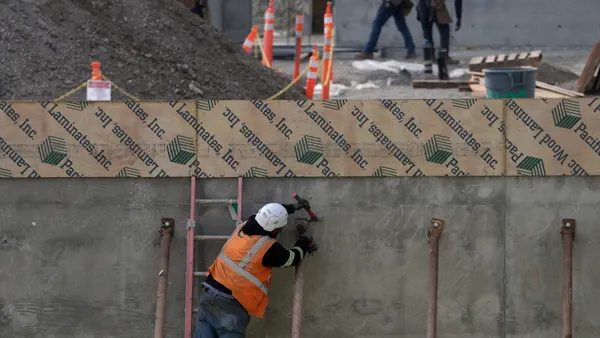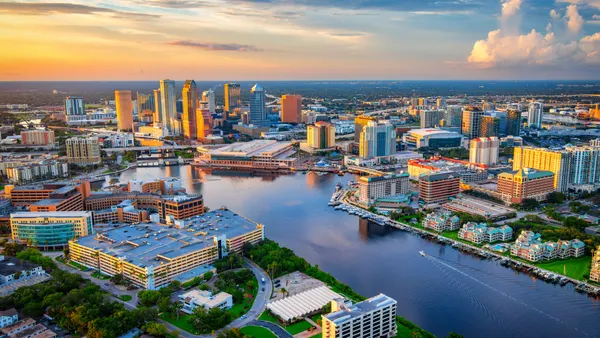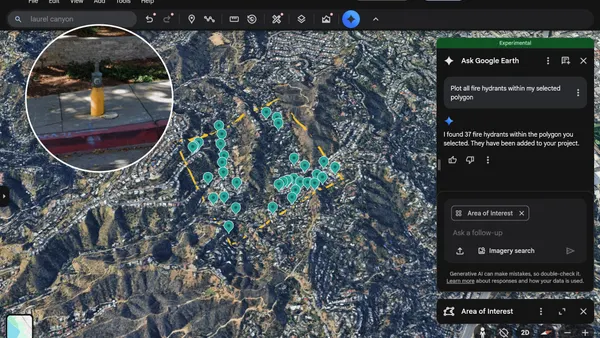Dive Brief:
-
Washington, DC, has the most LEED-certified square footage in the U.S., at more than 494 million square feet, according to apartment search website Abodo. Of that, roughly 311 million square feet is commercial and 183 million square feet is residential.
-
The New York–Newark–Jersey City, NY–NJ–PA, metro area ranked second in LEED-certified commercial space (306 million square feet), followed by Los Angeles–Long Beach–Anaheim, CA, (224 million square feet); Chicago-Naperville-Elgin, IL–IN–WI, (290 million square feet); and San Francisco–Oakland–Hayward, CA, (186 million square feet). Jacksonville, NC; Santa Fe, NM; Fairbanks, AK; Edwards, CO; and Taos, NM, had the most residential LEED projects per capita.
-
LEED certification accounts for 40% of the country's green construction economic contribution. LEED alone is expected to contribute $30 million to the U.S. gross domestic product by 2018.
Dive Insight:
Thanks to its bevy of federal projects, DC has become a center of green building activity.
Earlier this month, the District won the world's first LEED for Cities Platinum certification from the U.S. Green Building Council (USGBC) based on its performance across various environmental standards, including greenhouse gas emissions and clean energy innovations.
LEED might be the best-known standard when it comes to green building certification programs in the U.S., but it's not the only one.
The U.K. exported a similar standard to the U.S. last year. The BREEAM (Building Research Establishment Environmental Assessment Method) USA In-Use certification is billed as a lower-cost alternative to LEED. The certification, a joint effort between BREEAM and LEED consultancy BuildingWise, looks at existing, non-residential buildings, analyzes their current green status and provides steps for achieving BREEAM certification.
BREEAM has also partnered with the International WELL Building Institute, which administers the WELL Building Standard. This certification accounts for the physical aspects of a building but also considers occupant health and wellbeing. WELL officials reason that, because people spend the majority of their time indoors, the built environment should contribute to their overall health.
WELL looks a range of elements, from off-gassing by interior materials and finishes, to the quality of food available in vending machines, to how much natural movement is encouraged by the building's design.










